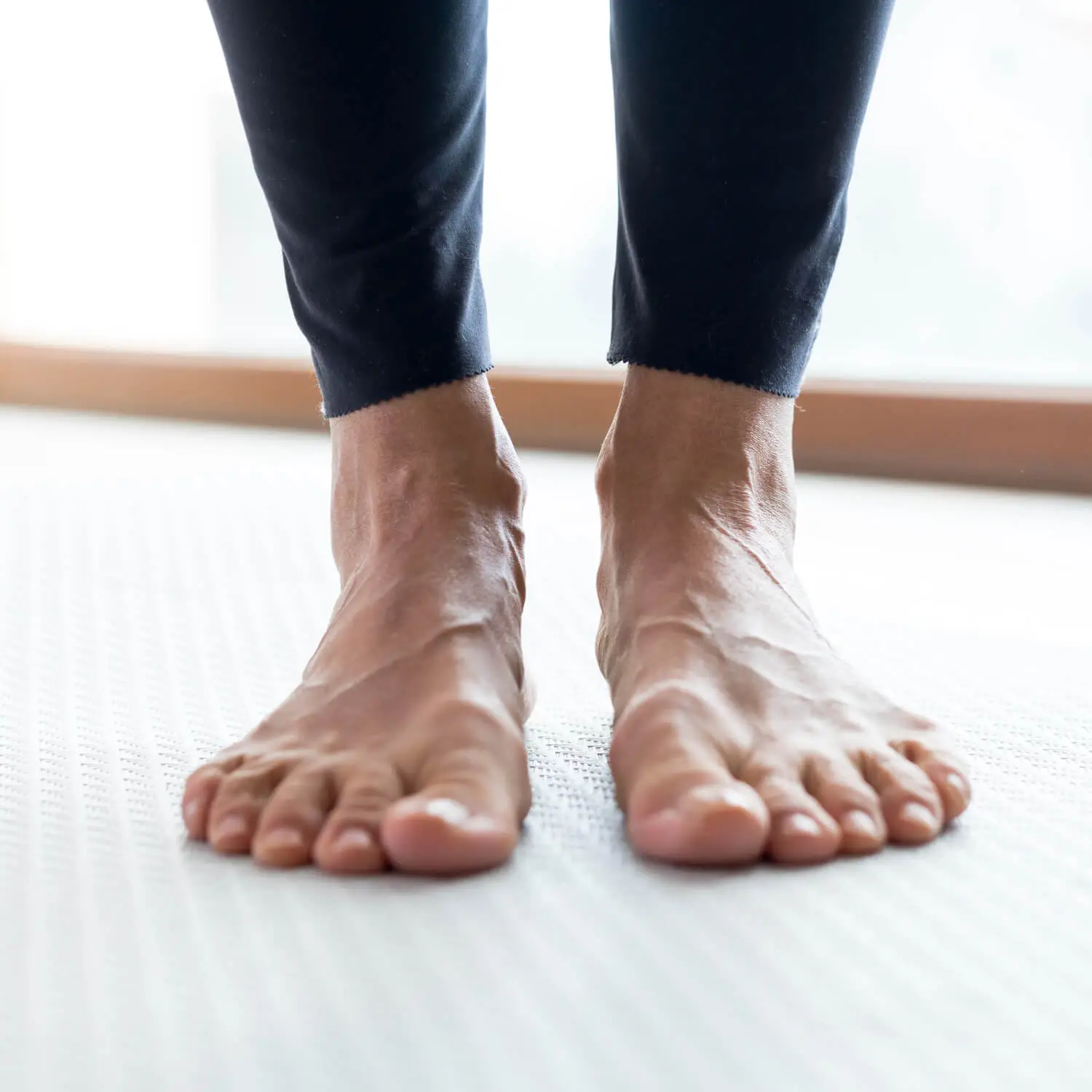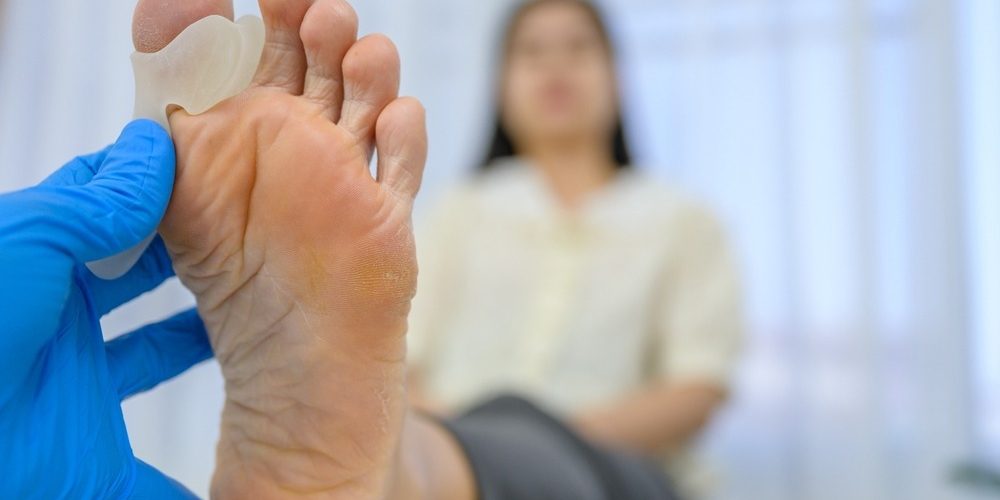Flat foot, or pes planus, is a common condition where the arches of the feet are lowered or absent. This can lead to various symptoms and affect daily activities. Understanding the causes, symptoms, and diagnostic methods is crucial for effective management and treatment. At Abacoa Podiatry & Leg Vein Center, we aim to provide comprehensive information on this condition to help you make informed decisions about your foot health.
How to Diagnose Flat Foot
Diagnosing flat feet involves a combination of visual and clinical assessments to determine the presence and severity of the condition. Here are the primary diagnostic approaches:
- Visual Inspection25
The first step in diagnosing flat feet is a visual inspection. A podiatrist observes the feet while standing and walking to check for any visible signs of flat feet. This includes looking for noticeable arch collapse and any related deformities.
- Footprints Test
The footprints test, known as the wet foot test, is a simple yet effective method. To perform this test, you wet the soles of your feet and step onto a flat surface that will show the imprint of your feet. If your footprint shows a complete outline of your foot without an arch, it may indicate a flat foot.
- Physical Examination
A physical examination by a healthcare provider involves checking the alignment of the feet, arch height, and any areas of pain or discomfort. The provider may press on various points of the foot to assess flexibility and structural abnormalities.
- Imaging Studies
Imaging studies such as X-rays, MRIs, or CT scans can be used for a more detailed assessment. These scans provide clear images of the foot’s structure and can help determine the extent of the flat foot. Imaging studies are beneficial for assessing any underlying bone or joint issues.
- Gait Analysis
Gait analysis involves observing your walking pattern to identify any functional problems related to flat feet. This test can reveal how the condition affects your overall movement and whether it contributes to other musculoskeletal issues.
Common Symptoms of Flat Foot
Flat feet can present with various symptoms, which may vary in intensity and impact daily life. Common symptoms include:
- Foot Pain
One of the most common symptoms of a flat foot is pain in the arches, heels, or balls of the feet. This pain can be persistent and may worsen with prolonged standing or physical activity.
- Swelling
Another common symptom is swelling in the feet or ankles, especially after extended periods of standing or walking. This swelling can be uncomfortable and may affect mobility.
- Fatigue
Individuals with flat feet often experience increased fatigue in the feet and legs due to altered gait mechanics. This can make everyday activities more challenging and tiresome.
- Misalignment
Difficulty aligning the feet properly can occur with a flat foot. This misalignment can lead to issues with balance and stability, making it harder to walk or stand comfortably.
- Overpronation
Overpronation, or excessive inward rolling of the feet while walking, is a common symptom of flat feet. This can lead to uneven wear on footwear and additional strain on the legs and lower back.
Causes of Flat Foot

Flat foot can arise from various factors, including:
- Genetics
Genetics plays a significant role in the development of flat feet. If you have a family history of the condition, you may be more likely to develop it yourself.
- Injury
Injuries to the foot or ankle can contribute to the development of flat feet, and trauma or damage to the tendons and ligaments that support the arch can lead to its collapse.
- Aging
The tendons and ligaments supporting the foot’s arch can weaken as people age. This natural degeneration can result in the development of a flat foot over time.
- Obesity
Excess body weight puts additional stress on the feet, which can contribute to the flattening of the arches. Maintaining a healthy weight can help reduce the risk of developing a flat foot.
- Medical Conditions
Certain medical conditions, such as rheumatoid arthritis or diabetes, can affect the foot’s structure and lead to flat feet. These conditions can impact the tendons and joints, resulting in the loss of arch support.
Treatment of Flat Feet
Flat feet, also known as fallen arches, can lead to discomfort and pain, particularly during physical activities. Fortunately, several treatment options can help manage this condition effectively.
1. Orthotic Devices
Custom orthotics, or arch supports, can provide the necessary support to alleviate pressure on the feet. These devices help distribute weight evenly and improve alignment, enhancing overall comfort.
2. Physical Therapy
A physical therapist can design a personalized exercise program to strengthen the muscles in the feet and legs. Stretching exercises can also improve flexibility, reducing discomfort and preventing further issues.
3. Footwear Modifications
Wearing supportive shoes with a wide toe box and good arch support is crucial for individuals with flat feet. Avoiding high heels and unsupportive footwear can prevent pain and discomfort.
4. Medications
Over-the-counter pain relievers, such as ibuprofen or acetaminophen, can help manage inflammation and pain associated with flat feet.
5. Surgery
In severe cases where conservative treatments fail, surgical options may be considered to correct structural issues in the foot.
How to Identify Flat Foot Symptoms
Identifying flat foot symptoms involves careful observation and self-assessment. Here’s how you can recognize if you might have a flat foot:
- Check for Arch Collapse
Observe your foot’s arch while standing. If the arch appears lower than usual or if your entire foot makes contact with the ground, it could indicate a flat foot.
- Assess Pain Levels
Pay attention to any unusual pain or discomfort in your feet, especially after standing or walking for extended periods. Persistent pain in the arches or heels may be a sign of a flat foot.
- Observe Changes in Gait
Look for any changes in your walking pattern or difficulty maintaining proper foot alignment. Altered gait mechanics can indicate the presence of a flat foot.
- Monitor Swelling
Keep track of any swelling in your feet or ankles. Frequent or severe swelling may suggest underlying issues related to a flat foot.
Take the First Step Toward Reliefâ€- Contact Abacoa Podiatry Today!
Flat foot is a common condition with various causes and symptoms. Early diagnosis and understanding of the condition can help manage and treat it effectively. If you suspect you have a flat foot or are experiencing related symptoms, contact Abacoa Podiatry & Leg Vein Center for a comprehensive evaluation. Our expert team is here to provide you with personalized care and treatment options.
For more information or to schedule an appointment, call us at 888-457-1970.



